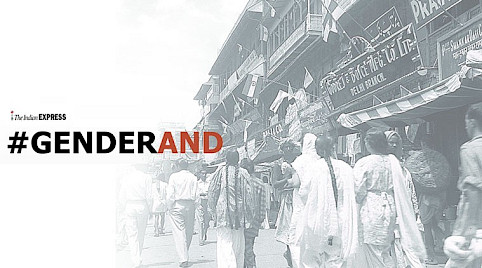On October 24, Digital Identities will run a journalism workshop in Dublin on achieving impact through social media. Supported by Google News Lab, the workshop will help journalists test story ideas to capture audience attention and encourage communities to take action
Ahead of the workshop, Abhay Adhikari, a graduate of DCU's Masters in Multimedia, interviewed independent journalist Neha Dixit about the evolution of investigative journalism through social media and the experiment she developed for gender reporting in India.
Hi Neha, tell us a bit about yourself:
I’m an investigative journalist with a focus on politics, social justice, gender and South Asia. I’ve reported for Al Jazeera, The New York Times, Caravan, India Today and others. Over the last twelve years, I’ve covered a wide range of issues, from farmer suicides to Maoist training camps.In 2011, I exposed government doctors in the city of Indore who were conducting illegal trials in return for financial incentives and promotions from pharmaceutical companies. As a result of this story, the Supreme Court issued notices to Central Government and the Medical Council of India, which resulted in a short-term ban on clinical trials.
How has social media changed the way you report on sensitive issues?
It was around 2008–2009 that we first started exploring the role of social media to disseminate news stories. I believe the growth of social networks has given journalists an unprecedented global reach. We have the freedom to publish stories on international platforms, and social networks helps us reach Indian audiences. This is very important in raising awareness of politically sensitive issues that are ignored by mainstream media in the country.But social media also puts journalists in the spotlight. What do you feel about that?
The journalism has to be the story, not the journalist. For example, Siddharth Varadarajan, the founding editor of TheWire, uses platforms like Twitter successfully to draw mainstream attention to important issues. He’s a larger than life character, but that never gets in the way.As for my own experiences. Well, on social media you encounter people’s biases without any filter whatsoever. I’ve been called many names, and have been trolled quite often. It’s the usual stuff. After a point, it’s amusing. I don’t think there’s anything one can do to safeguard oneself from this sort of abuse. I regularly block people and report them. The only other option is to quit social media, which I don’t plan to.
Do you write for a particular target audience on social media?
Most of my stories are long-form, which involve investigation, ground reporting and elements of analysis. So my audience ranges from policy makers to grassroots activists. But I want to write for everyone, so I try and present my work as a nonfiction narrative that reads like a short story. I feel you have to be a storyteller to make journalism accessible, especially if you want to compel readers to engage critically with the subject matter and share the piece with their own networks.
Tell us about the social media experiment you developed at our workshop in Delhi?
I attended the workshop in the midst of planning a month-long series on gender reporting in the media. The project is called #GenderAnd and the stories were published on IndianExpress.com. My experiment was to present serious journalism in an accessible manner: how can I introduce multiple, complex themes in a short time period, and then encourages audiences to read the stories as well as engage with the issue in real-time through conversations on Twitter.What was the outcome of your experiment?
The workshop helped me look at the project as a series of complementary narratives rather than disparate stories, which was useful as it allowed us to take our audience on a journey. The emphasis on values and context, and how they play out on social media, helped me develop an engagement strategy that was more aligned to my journalistic practice. It was the little details, such as the phrasing of headlines, that made a big impact. For instance, the day we launched, our first story had 3500 shares in half a day, which was a fantastic start to the project.Most of our stories were picked up by national and global influencers such as UN Women, which introduced us to a new audience. We also used social media to create a feedback loop with our readers. It’s quite remarkable that I was able to engage in constructive dialogue with readers on social media, a place where I’m regularly attacked with sexist abuse. All the stories are available here on IndianExpress.com
The theme of our upcoming workshops in London and Dublin is ‘Impact Journalism.’ What advice will you give to participants?
In my experience, this is one of the few workshops where you can apply the concepts being presented to your project. I liked the fact that we were given plenty of opportunities to experiment and customise our experiment throughout the day. My advice would be to come prepared with an idea that you can explore on the day.
The Digital Identities workshop will run in Dublin on October 24. The workshop is Supported by Google News lab and registration is free. Find out more here.




